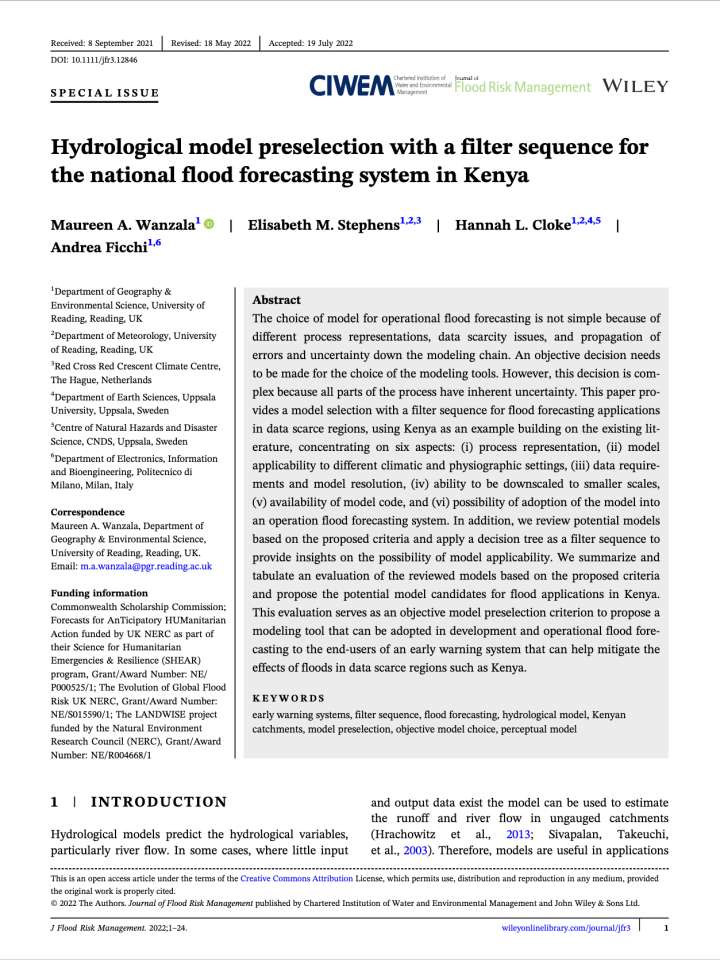Hydrological model preselection with a filter sequence for the national flood forecasting system in Kenya
This paper provides a practical approach for selecting a model based on a step-by-step filter sequence for flood forecasting applications in data scarce regions, using Kenya as an example building on the existing literature, concentrating on six aspects: (i) process representation, (ii) model applicability to different climatic and physiographic settings, (iii) data requirements and model resolution, (iv) ability to be downscaled to smaller scales, (v) availability of model code, and (vi) possibility of adoption of the model into an operation flood forecasting system. In addition, it reviews potential models based on the proposed criteria and apply a decision tree as a filter sequence to provide insights on the possibility of model applicability.
Suggestions on the way forward to challenges modeling communities in developing countries face include:
- Developing countries should consider working on developing their own models. The current models tailored to catchment scale or geographical locations, developed with nicely all year round flowing rivers in relatively wet catchments and the inclusion of a variety of hydrologists and model developers with different needs and perspectives is most welcome and needed to produce hydrological models for a wider range of environments.
- A well-prepared and comprehensive database platform with useful information pooled together, such as:—different input information, advantages and disadvantages of different models is important in providing initial information to judge by eye on which model would work best.
Explore further
